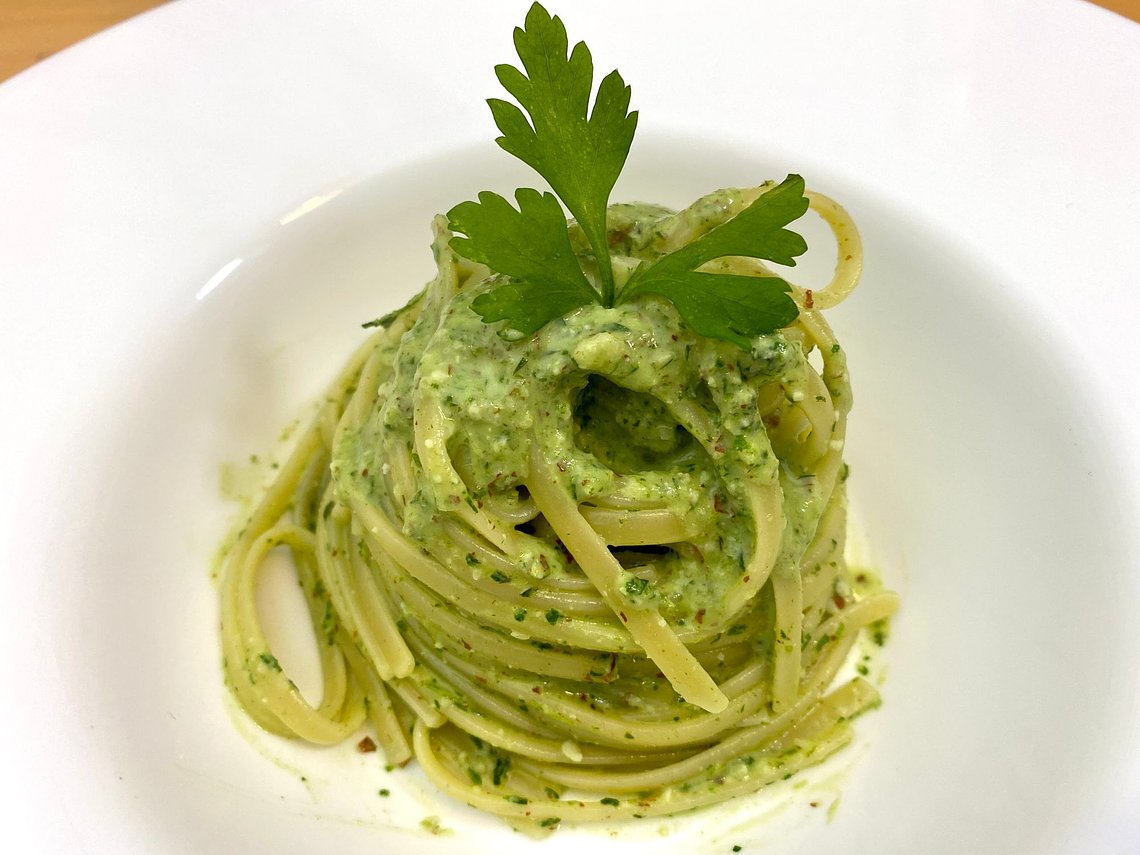Zero-Waste Carrot Leaf Pesto
We're delighted to introduce a new contributor to CED Magazine: Alba Gelli, who has written about this ingenious pesto, passed down to her from her nonna.

Posted on Mon 22 Feb 2021 · by Alba Gelli
We're delighted to introduce a new contributor to CED Magazine: Alba Gelli, who has written about this ingenious pesto, passed down to her from her nonna.
Alba is the author of Femicate, a lifestyle blog about intentional living that combines her passions for good food and writing. Currently living in London, Alba was born and bred in Bibbona, a tiny village on the coast of Tuscany where life was simple and everybody knew each other.
She learned how to cook watching her two grandmothers and her father in the kitchen when she was a child. They taught her the basics of excellent Italian food: great quality ingredients, and simplicity. Her biggest goal is to cook like a true Italian nonna because food is the first act of love you can do for someone and the best way to bring people together.
How many times have you thrown away carrot leaves? I am guilty of that myself!
Since I was little, my grandmothers taught me to keep every single thing the harvest would give us and I found out that the vast majority of vegetable leaves that we bin, not only are actually edible, but are also delicious and extremely healthy!
Carrots from street vendors usually come in bunches and still have their leaves on and maybe a bit of mud, as they come straight from the farm. The greens can be cut and stored in a glass jar in the fridge for a couple of days and used to make a delightful pesto, however I encourage you to use them immediately: they will be tender.
We can almost always turn any vegetable leaves into some sort of pesto by mixing them with a nut or seed, cheese, and a little bit of oil. It is a wonderful way to get creative in the kitchen and also to reduce our everyday waste, which is a marvellous act of kindness towards our planet.
Carrot greens have a tangy taste as well as pleasant bitter notes that can be easily balanced out by adding some nuts and cheese to get a unique pesto sauce for your pasta or crostini starter.
How is it different from a classic pesto recipe? I swapped the pine nut and basil combo for carrot leaves and toasted almonds, but the process is almost identical and the result is still lip-smacking!
Suitable for vegetarians, it is easy to make and ready in only 10 minutes. You can use a hand blender, a food processor or a pestle and mortar.
It is possible to make a bigger batch and store it in the fridge for up to 5 days. Alternatively, you could also store it in individual portions in the freezer (it will last up to six months).
Ingredients
- Bunch of fresh carrot leaves
- 100g of hard Italian cheese, such as Parmesan
- 50g almonds
- 1 small clove garlic
- 3 tbsp of extra virgin olive oil
- A pinch of salt and black pepper
1 First of all, remove the thick stems pieces and soak the carrot leaves in cold water for a couple of minutes. Wash them thoroughly to remove any trace of dirt and then drain them with the help of a sieve.
2 Chop the carrot leaves roughly and place them in a tall mixing bowl, where you also grate the cheese.
3 In a shallow non stick pan, toast the almonds for 3 minutes, then chop them roughly with a knife and add them to the bowl with the garlic and the oil. Season with salt and pepper to your taste.
4 Blend the mixture, using a food processor, stick blender or pestle and mortar, until a chunky paste forms. The longer you blend, the smoother the consistency.
The sauce is ready!
For a vegan version, just remove the cheese and add extra nuts and oil or a splash of your favourite plant based milk (coconut milk would be the best choice because it is thicker).
If you want to use the carrot top pesto as a sauce for pasta, first cook your favourite type of pasta following the instructions on the packet and reserve a cup of the hot cooking water before draining it. Combine the pesto with your cooked pasta in a pan and include a splash of the water you previously set aside to achieve a looser and velvety texture.
As a crostini starter: Spread the pesto on a toasted slice of good quality bread and enjoy!
